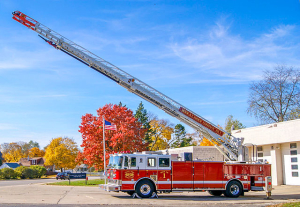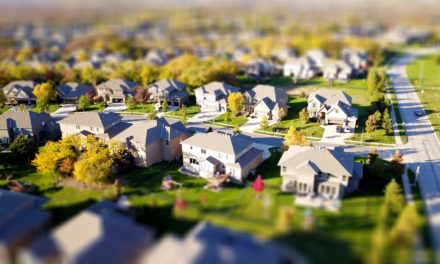In part one of this series, we looked at a few methods of promoting economic development in local communities. These included education, attractiveness and availability of housing, and government programs and incentives. Each of these approaches contributes to the economic growth of an area in a significant way.
Today we will expand the list with additional methods that are used to achieve economic prosperity. These attributes also contribute to the advancement of the community and provide development opportunities in a way that may not have been previously considered.
Energy Management and Green Cities

Wind turbines, courtesy of janie.hernandez55, CC BY 2.0.
Many cities are decreasing the amount of energy that they consume, especially from non-renewable sources. There are many tax incentives and rebates for increasing the energy efficiency of businesses and homes. Also, new businesses are often drawn to areas where energy management is a top priority. Governing.com states that more cities around the world are using energy management strategies to attract and retain businesses and jobs. The article also notes that these businesses can save as much as seven times the energy costs as those in cities where there is little or no focus on energy efficiency. Once these saving opportunities are realized, it is apparent why industries are drawn to these locations.
While many industries are focusing on conserving energy, many cities are striving to use cleaner, renewable sources for their power needs. Some cities, such as Burlington, Vermont, have completely switched to renewable energy. Electricity in these areas is being generated primarily by hydroelectric power, wind turbines, solar, and biomass resources. These resources are environmentally responsible and are a major selling point in rapidly developing areas. Cities like this are attractive to individuals and businesses, especially those looking to save money while using energy with fewer environmentally harmful effects. For more information on cities using green technology for economic growth, you might start with our blog post from last year.
Fire Department Ratings
Perhaps one of the most surprising ways to promote economic development is to contribute more to local fire departments. Each fire department is evaluated and assigned a rating based on its performance and equipment, and these ratings are directly related to fire insurance premiums. This article from Firehouse magazine explains the rating system in detail. The Insurance Services Office (ISO) assesses and rates fire stations on a scale of 1 to 10, with Class 1 being the best level and quality of fire protection in an area. Since these ratings determine the amount that is to be paid for fire insurance, businesses and individuals can expect insurance premiums in a Class 1 area with excellent fire protection to be significantly less than in a Class 10 area where improvements are needed. Here’s how the scores break down: 50% is based on an evaluation of the department’s training, equipment, and staff, while 40% is based on the water supply in the community. The last 10% is based on the emergency communication system within the area. Providing more funding to local fire departments can result in higher-quality equipment and more staff, leading to lower fire insurance premiums all around.

Fire engine, courtesy of Wikipedia user Zmast28, CC BY-SA 3.0.
Lower fire insurance premiums can lead to economic development as well. Municipalities are able to provide a financial benefit to residents and industries by earmarking tax dollars for fire department improvements. The ISO ratings can serve as an incentive for improvement. Robert Andrews, Vice President of Community Hazard Mitigation at ISO, states, “spending money on fire protection and prevention is increasingly seen as an economic development tool… towns are increasingly using their class as a means to attract and retain businesses.” Residents and industries are drawn to safe locations with high-quality fire protection. Lower fire insurance premiums resulting from top-notch fire protection are an added benefit.
Sports Complexes
Sports facilities and multisport complexes have the potential to spur economic development in a big way. Even more effective are sporting communities where the immediate area around a sports complex is connected to the facility. These communities provide an opportunity for an inclusive vacation destination experience where the focus is on sports, but there’s plenty more to do for the whole family. Sporting communities strive to provide any imaginable entertainment outlet without visitors ever having to leave the area. These large developments result in many new jobs and a significant increase in tax revenue in the cities where sporting communities are located.
An example of a new sporting community with a large economic impact is the LakePoint Sporting Community and Town Center. LakePoint is located in Bartow County, Georgia, a previously rural area north of Atlanta. Once completed, LakePoint will serve as a sporting vacation destination complete with sports venues for 20 different sports, restaurants, hotels, shopping, theme parks, and more. The LakePoint development is expected to create over 26,000 jobs at full build. See this press release for even more information about LakePoint and the impact that it is expected to have in Bartow County and the surrounding area. Building a sporting community like LakePoint can provide a necessary boost to a local economy while also creating a fun, unique experience.
Wrapping Things Up
These two posts have displayed a few interesting avenues that lead to economic growth in the locations where they are implemented. These attributes have the potential to differentiate one community from another while helping them to advance economically. Have you noticed the benefits of any of these economic development tools in your area? Let us know in the comments below.





A cautionary note on the value of a lower ISO rating. In most cases, savings do not accrue to residents once the rating drops below 5 or 6. Also, lowering the rating requires a higher investment in fire services. Since public fire suppression is manpower-intensive, this means paying more for salaries and pensions. The increased burden can bankrupt cities in the long run.
That being said, alternatives exist for growing communities. I describe them in “Sustainable Fire Protection” at http://www.fdexcellence.com.
A lower ISO rating comes at a price, and does not necessarily make a community safer. When a rating drops below 5-6 (depending upon each state’s insurance regulations), only commercial properties benefit from lower premiums. The premiums for homeowners remains the same. And a lower ISO rating comes at a price. Fire suppression is manpower-intensive, and improving the fire department portion of the rating can require more firefighters on duty. That increases salary and pension costs, which account for 90 percent+ of fire department expenses. In some cities, those expenses have grown high enough to force them into bankruptcy.
But cities can increase staffing for less and still qualify for lower ISO ratings. I describe some of the 350+ programs now operating at http://www.fdexcellence.com.